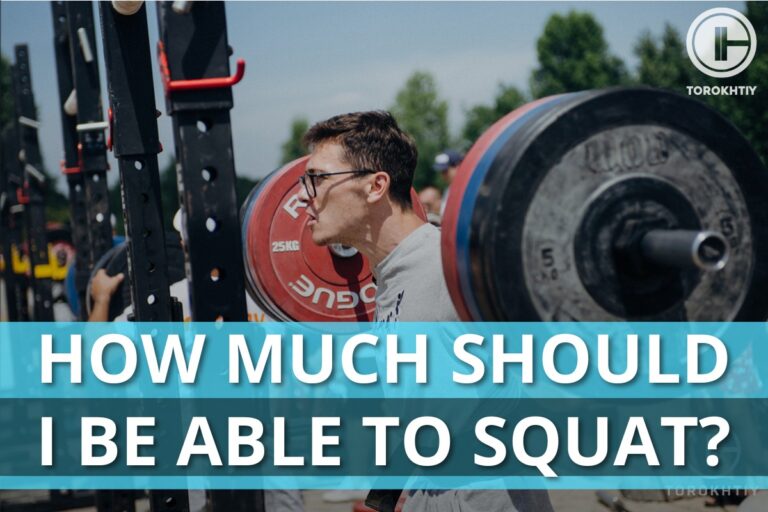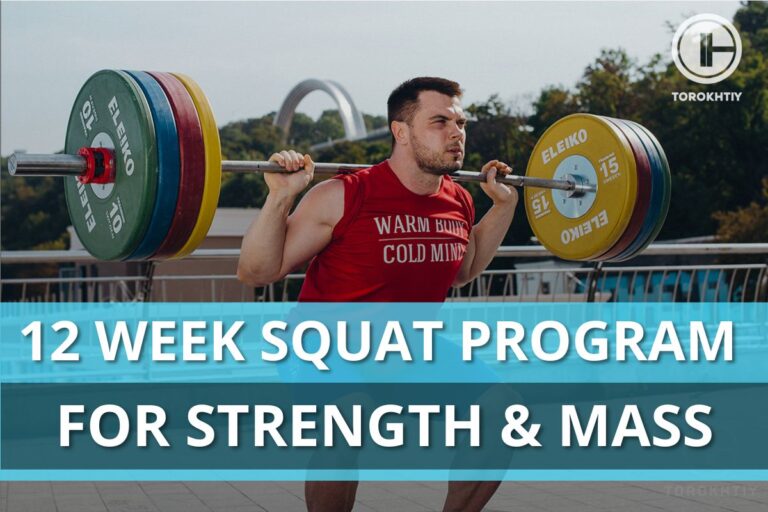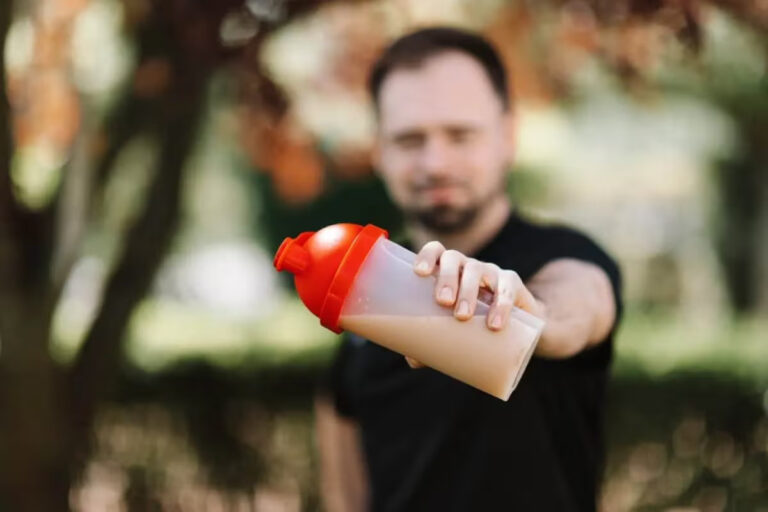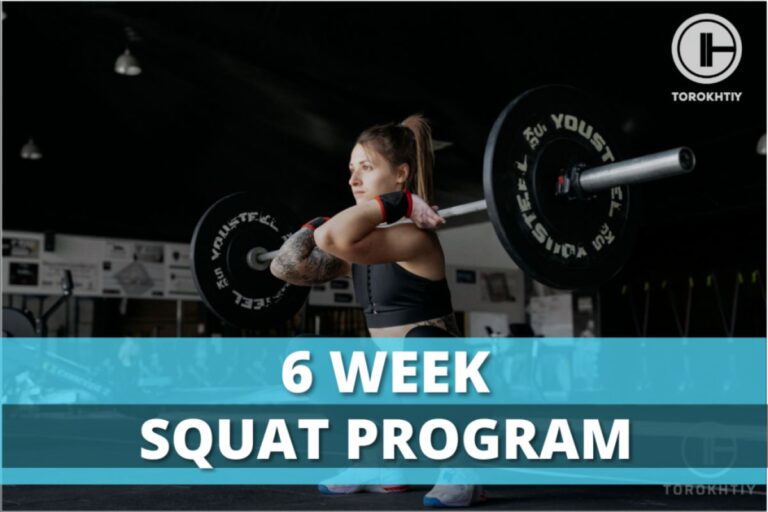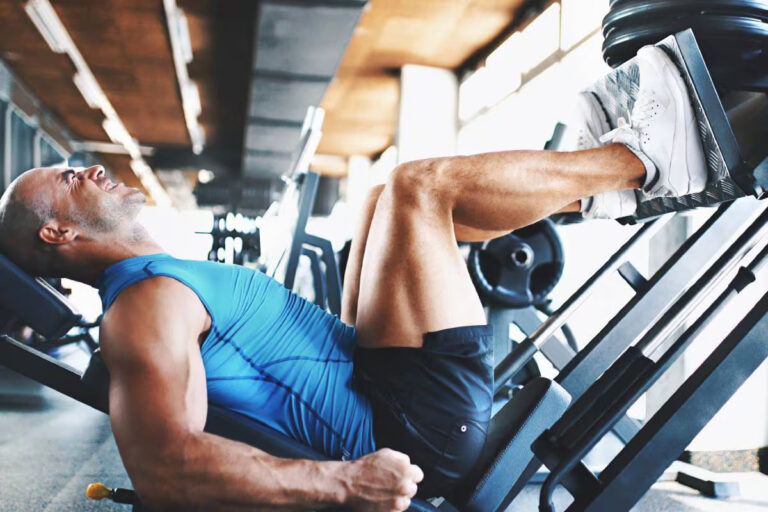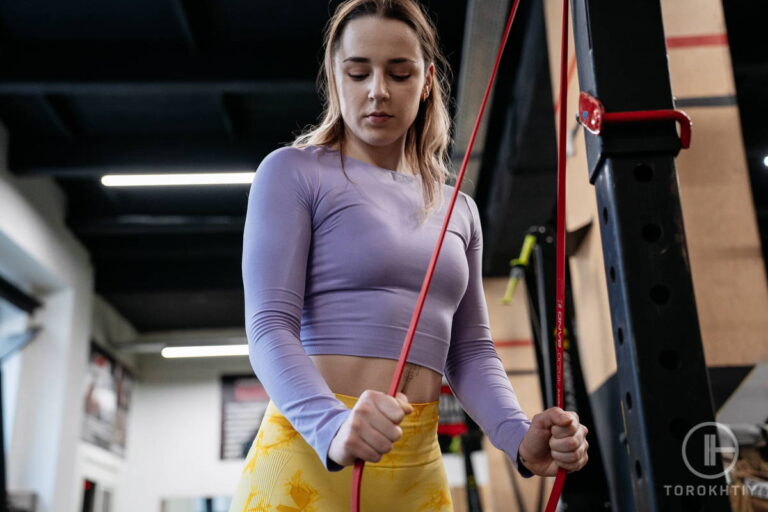Are Converse Good for Lifting? Let’s Find Out Together
We often get the question, “Are Converse good for lifting?” However, we never give an answer because it’s hard to list all the benefits and all the downsides in one quick comment. However, in this article, we will give you in-depth answers to all the Converse-related questions, including whether you should use Converse as lifting shoes or not.
Are Converse good for lifting? Many of their features make them an excellent shoe for lifting; however, if you plan on competing or training professionally or semi-professionally, then using Converse for weightlifting is not recommended. Instead, it’s better to opt for professional lifting shoes in such situations.
Reasons to Wear Сonverse for Lifting
If you walk into almost any gym in nearly every country, you will likely see many people working out in Converse shoes. Now, this might make you start wondering, “Why do people wear Converse to the gym?” in this article, we will try to give you in-depth answers to this question while also explaining the benefits and downsides of wearing such shoes for weightlifting.
Let’s first start with all the reasons why people wear Converses at the gym.
Converse Shoes Have Flat Soles
Most of the standard shoes people wear to the gym are made for running, which means that they have curved and cushioned soles designed to help push the athlete forward and maintain proper form while running. And while such shoes are great for walking around, jogging, etc., they’re not ideal for weightlifting, where flat shoes are the ones that can offer better support, more stability, and overall contribute to learning the proper lifting form for each exercise.
Particularly for movements such as the squat and the deadlift, flat shoes are particularly good, as they allow you to push off the ground more efficiently and remain balanced. In contrast, with running shoes, you are likely to start going forward because of the shape of their soles.
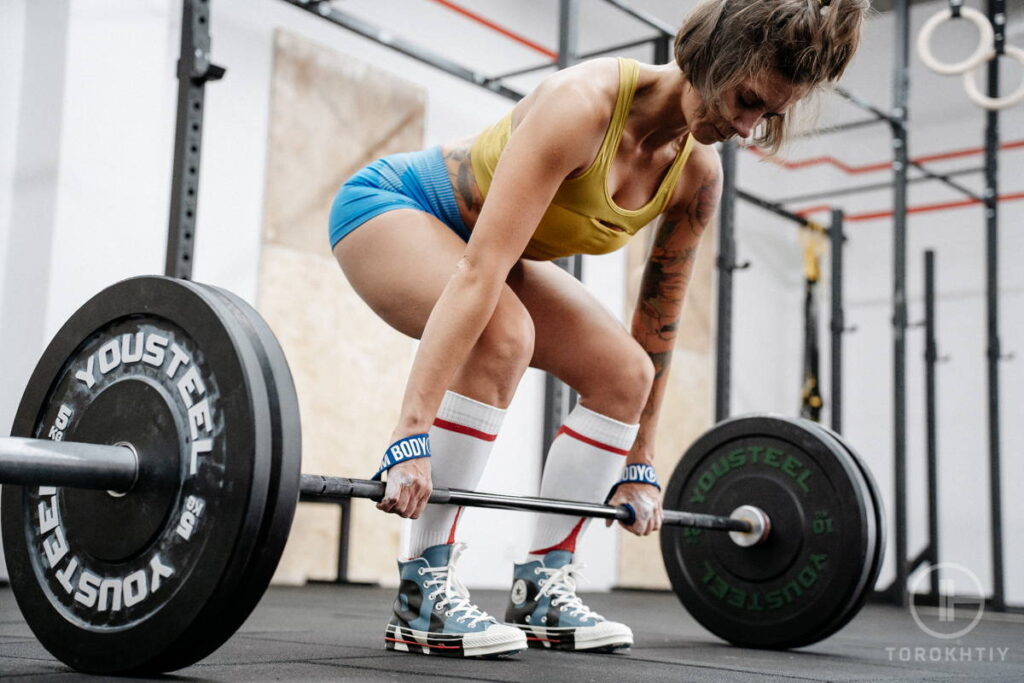
They’re Cheap and Easy to Find
Converse shoes are great for beginners. Not only can they be found in literally every shoe store, but they’re also typically cheap and last a long time. Along with that, if you find out that lifting isn’t the right sport for you, you can easily continue to wear your Converse shoes for other activities, as they’re also very stylish and tend to be “on trend” every couple of years.
They Lack Cushioning
Converses tend to lack the cushioning that normal shoes typically have. And that’s a big benefit for people who want to get into lifting, as the lack of excess cushioning provides a better feeling for the ground and more stability so that you can remain firmly on your feet, even when lifting heavy weights.
With Converses, you push off the ground immediately, allowing you to use more momentum while also helping you keep a decent posture through the entire movement, especially when you do compound exercises like the squat and the deadlift.
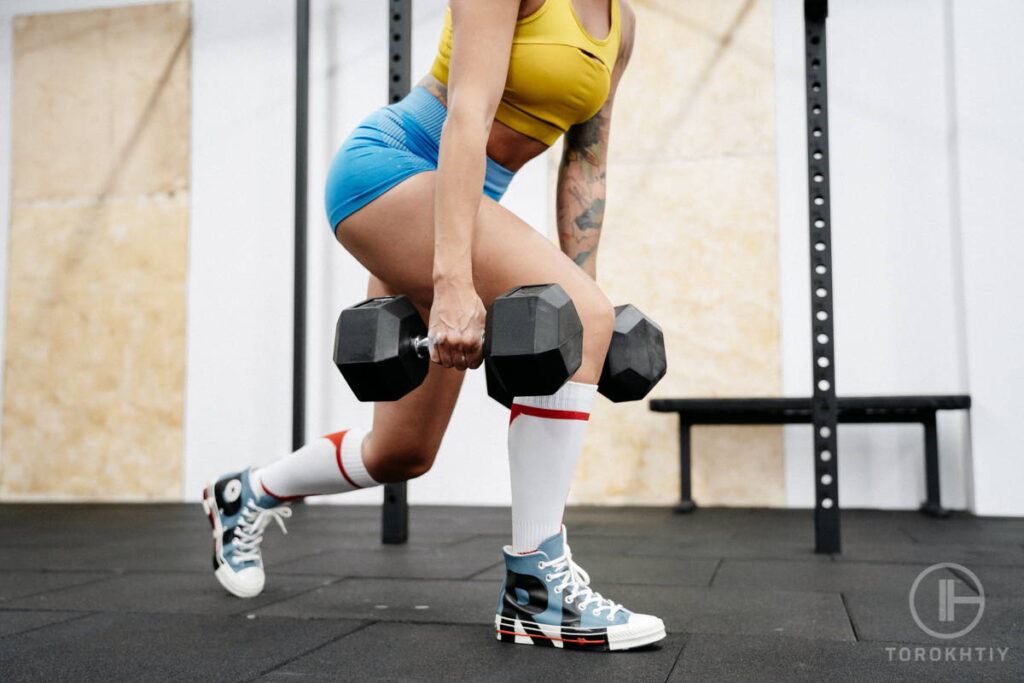
Converses are Comfortable
The Converse Chuck Taylor’s have been around since the 70s, and that longevity is not due to some magic trick or down to pure luck. It’s mainly because this shoe is super comfortable and easy to wear. You don’t have to do wear tests with Converses, and you don’t have to get them loosened up. You buy them, and you can start walking and training with them immediately. This is a particularly important benefit, as professional lifting shoes can sometimes be uncomfortable to wear, or you may need some time to get used to them, which is not at all necessary with Converses. Also, if you have wider feet, the Converse shoes are a much better fit compared to traditional weightlifting or powerlifting shoes that are a lot more narrow or need some time to loosen up.
Why Сonverse May Not Be Best for Lifting
After discussing all of the benefits that you get from Converse shoes, let’s take a look at some of the disadvantages or some of the reasons why you might choose to go with professional lifting shoes instead. Even though many use Converse for powerlifting and even Olympic-style weightlifting and consider them the “go-to” shoes for that style of training, we will have to disagree. While Converses are an excellent option for beginners, using Converse for deadlifting or squatting in competition or with truly heavy weight is something we’d advise against. And to back that statement up, let’s take a look at a few reasons why Converse shoes are not the best for lifting.
They Lack a Lifted Heel
Professional weightlifting shoes have an elevated heel, which can be very helpful, especially if you plan on working on your squats. While many people would answer a resounding “Yes” to the question “Are Converse good for squatting?” the reality is that they’re not the perfect fit for everyone. For example, a flat shoe is not the best option if you lack ankle mobility and cannot correctly squat deep. Instead, for such athletes, a professional lifting shoe is much more convenient as it helps reduce the need for ankle mobility and allows the athlete to maintain proper form through the entire movement. This is especially key for lifters who are experienced and are already loading up heavy weight on the bar, as squatting with an incorrect form and with heavy weight can lead to horrendous injuries.
Not as Safe as Professional Lifting Shoes
Using professional weightlifting shoes, especially if you’re training for a competition, can help you prevent many injuries. When you’re performing heavy lifts and loads of compound movements, the risk of injury is ever present. However, when you’re working out with a shoe built for the sport that’s solid and provides the needed support, you’re dramatically reducing the risk of injuries. While Converses tend to be much more stable and solid compared to running shoes, they’re nowhere near as durable, supportive and stable as professional lifting shoes.
Lack of Ankle Support
Now, some might claim that the high-top version of the Converse Chuck Taylors provides ankle support, but we’d say that’s a false statement. While they tighten around the ankle, the material used for the shoe’s build is not durable and doesn’t really help lock in the ankle joint. If you take a look at professional lifting shoes, most models are made from rubber, leather, and what feels like plastic, which provides not only more stability but also additional support to the foot and the ankle. The increased firmness that comes from these materials, combined with the solid base of traditional lifting shoes, gives more security to the ankle joint and can help an athlete develop power more efficiently, especially when squatting.

In What Exercises Should You Avoid Wearing Сonverse?
Even though there are some disadvantages to wearing Converse shoes for lifting, they still remain a solid choice for squats, deadlifts, and some of the other Olympic-style movements. However, there are some forms of exercise for which Converse shoes are a total no-go unless you want to cause some serious injuries to your body. Let’s see what they are.
Running
Unless you’re looking for ways to destroy your feet completely, we’d strongly advise not running longer than a few hundred meters with Converses on. While their flat sole makes them a good option for lifting, it simultaneously makes them a horrendous one for running. The fact that all running shoes have a curved sole and a cushion is not a coincidence; it’s because that’s what’s needed in order to make the shoe more comfortable for the feet and to lower the damage that the knees and ankle joints take from long-distance running. So, if you plan on doing some cardio after your lifting session, don’t be lazy – take a second pair of shoes appropriate for running.
High-Intensity Interval Training
If you plan on doing any cardio-style workout that requires jumping up and down, performing quick changes of direction, etc., then you will want to avoid wearing Converse shoes during that particular workout. Not only are Converse shoes flat and without any cushion, making jumping harder and landing rough, but they’re also heavier than the shoes typically used for this style of training. By wearing them during a HIIT session, you’re only risking damaging the soles of your feet while also making the entire workout that much harder for yourself, as you will have to use more power when doing box jumps or burpees.
Having said all of that, we can safely conclude that Converses and cardio sessions are not a good match. While the shoes are great for walking or warming up on the bike, they’re definitely ones you will want to avoid wearing during your next HIIT class or your Sunday run. Overall, while Converses remain a solid choice for lifters at the beginner level, however, they’re not the shoes we would recommend to professional or even semi-professional athletes. As every athlete knows, once you get to a certain level in any sport, the need for professional equipment increases as even the smallest advantages start to matter.

Are Сonverse good for deadlifting?
While they’re certainly not the best option on the market, Converse shoes are a decent choice for your deadlifting sessions. They have a 00mm” heel-to-toe drop, which means that your foot will remain flat on the ground throughout the entire movement, helping you maintain stability and balance, even with heavy weight. Along with that, their sole is stable and offers decent traction with the gym floor, meaning that you won’t find yourself sliding, which is key for a solid deadlift.
Having said that, if you’re looking to increase your performance and get into competitions, then Converses are a sub-par choice. They’re great for beginners and even intermediate lifters; however, semi-professional and professional athletes have to look for professional shoes that are not only “decent” but that provide performance benefits, as even that 1% will start to matter in competitions.
Are Сonverse Good for Squats?
Here the answer will be similar to the one for the deadlifts. Converse shoes are a decent option for squats – they have a flat sole, and they lack cushion, which means that the foot will remain firmly planted on the ground, allowing the athlete to maintain proper form and balance. Having said that, if you’re a person who lacks ankle mobility, Converse shoes will definitely not feel comfortable for squatting and will lead to either a bad form or the inability for you to squat deep. That is why, we would recommend using professional weightlifting shoes for your sessions, if you feel like you need help with your squat form or if you know that you lack ankle mobility. Along with that, for lifters competing in competitions of any kind (powerlifting, Olympic-style, etc.), using professional shoes is the best way to ensure that you maintain proper form and that you’re giving yourself the best chances to improve your numbers.
Best Сonverse for Lifting
Throughout this article, we’ve talked about Converse shoes as though they only have one model. However, if you hop on to their website, you will quickly see that’s not the case. With that said, most people associate the Converse brand with the Chuck Taylor model, which is the one we’ve been discussing this whole time still; if you don’t know which Chuck Taylors to purchase for lifting, here are two suggestions from our side.
Converse Chuck Taylor All-Star High Top
This model can be alternatively called a “timeless classic.” This is the most well-known model of Converse shoes, and it has truly passed the test of time. It’s a high-top variation of the Chuck Taylor, and it has all the features needed to be considered a solid lifting shoe. It’s flat-soled, offers great traction with any surface, and lacks almost any cushioning. Along with that, if some of you want to have a bit more protection on the ankle, the high-top version of the Chuck Taylors is ideal, as it wraps right around the ankle joint, giving it more support compared to the low-top style.
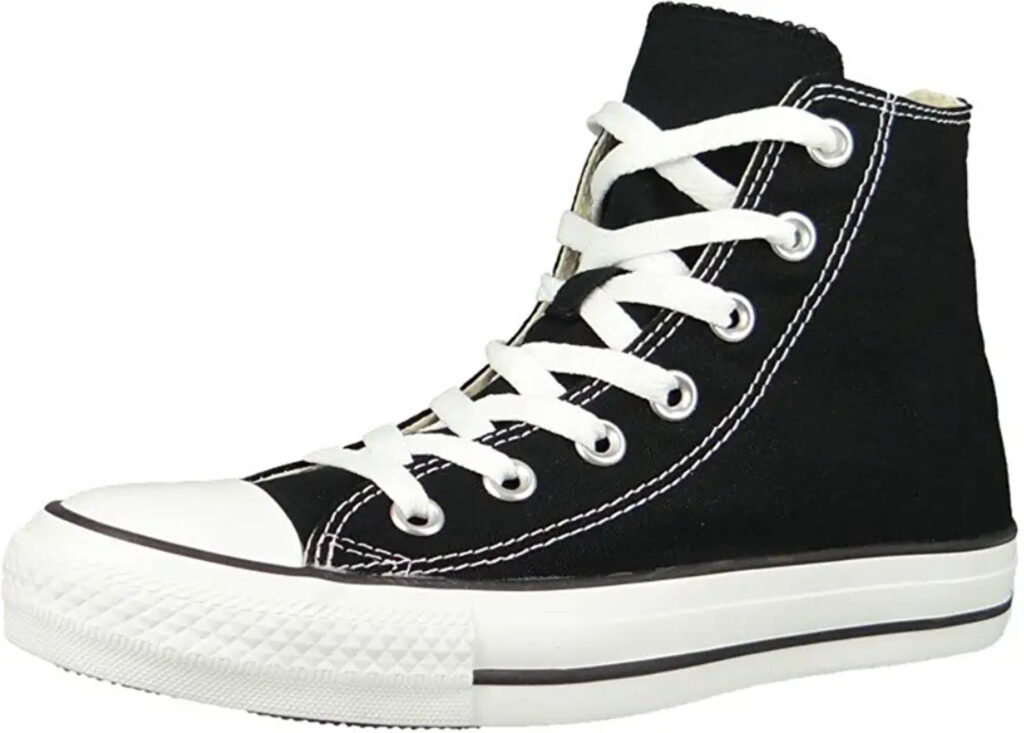
Converse Chuck Taylor All-Star Low Top
The same classic, however, that the low-top variation. Whether you choose the high or low-top Converse for lifting depends entirely on your personal preferences. These two models have the same build and offer the exact same benefits; the only difference comes from the fact that the high-top model can feel a bit more stable to people who want some support for the ankle joints. Otherwise, it doesn’t matter whether you choose to buy the high top or the low top model, at least when it comes to lifting advantages. So, our advice is to pick the ones which fit your personal style best and that you would wear even outside the gym.
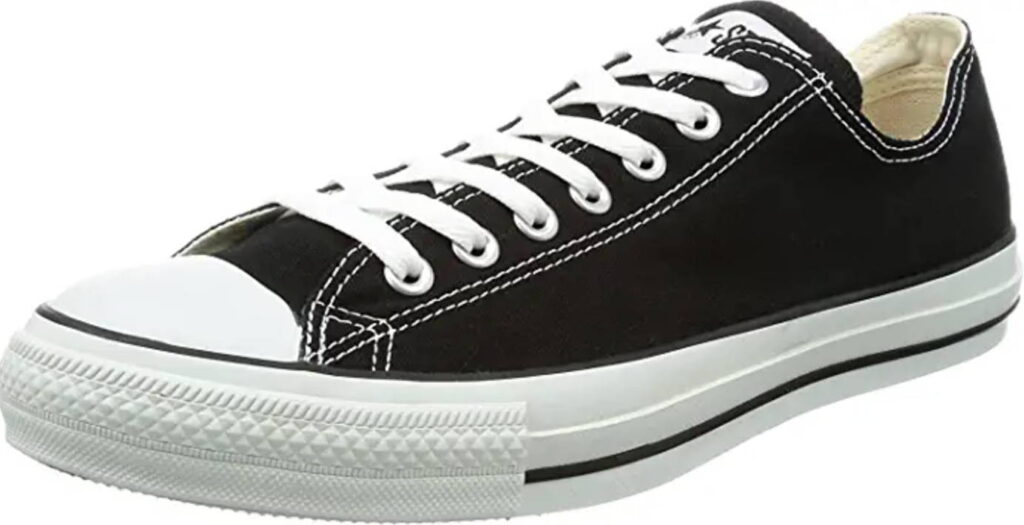
FAQ
Which is better for lifting, Vans or Converse?
What makes both of these shoes good for lifting is their flat sole and the traction they offer with different surfaces. So, there aren’t too many differences when it comes to lifting benefits. Our advice would be to choose one of the two depending on which one fits your style and aesthetic better.
Are Converse Good for Fitness?
If the fitness workout you’re doing is lifting-focused, then yes, Converse shoes can be a decent option. However, if you’re taking a fitness class that requires you to jump and run, then we would suggest not wearing Converses. As with weightlifting, if you plan on taking up fitness, it’s best that you use shoes specifically made for that sport.
Are Converse Good for Olympic Lifts?
They can be an okay option while you’re learning proper technique and not performing any of the movements with heavy weight. Having said that, it would be a stretch to say Converse shoes are a good option for Olympic lifts. If you plan on doing Olympic weightlifting, get a pair of professional shoes – they’re worth the investment.
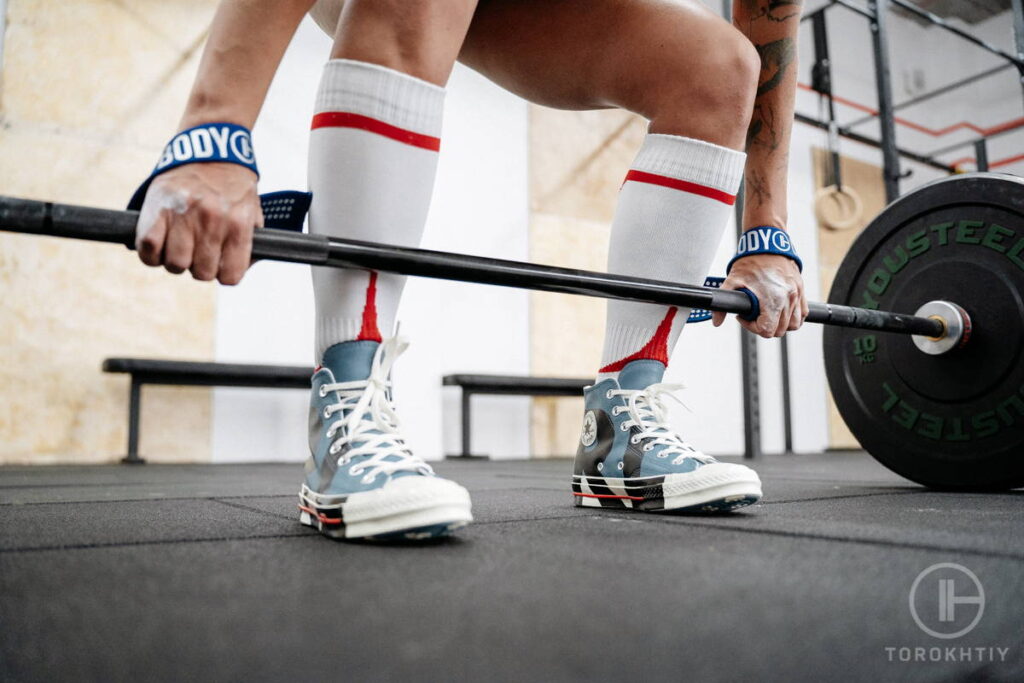
In Conclusion
We can easily conclude that Converse shoes are a decent option for lifting. Even though they’re not the best you can get on the market, they’re still a decent choice for beginner or intermediate lifters on a budget who are not sure whether it’s worth it to spend their money on a pair of professional lifting shoes. Having said that, we’d like to hear your opinion on Converses – do you think they’re a good option? What shoes do you wear during your lifting sessions? Let us know in the comments.
Also read:
- Best Olympic Lifting Shoes
- Best Affordable Weightlifting Shoes
- Best High Top Weight Lifting Shoes
- Are Vans Good for Lifting
- Squatting Barefoot vs Shoes
- Deadlifting With Squat Shoes
- Why Should You Wear Flat Shoes When Lifting
- Nike Blazers for Gym
- Best Fitness Shoes for Flat Feet
- Best Cross Training Shoes For Wide Feet
- Best Deadlift Slippers
References:
- What Is HIIT, and How Can It Improve Your Workouts? // Self: https://www.self.com/story/what-is-high-intensity-interval-training-benefits
- How to Squat with Proper Form // Health Line: https://www.healthline.com/health/fitness-exercise/proper-squat-form
- 6 Olympic Lifting Movements // Smai: https://www.smai.com.au/blogs/news/6-power-lifting-movements
Why Trust Us?
With over 20 years in Olympic Weightlifting, our team does its best to provide the audience with ultimate support and meet the needs and requirements of advanced athletes and professional lifters, as well as people who strive to open new opportunities and develop their physical capabilities with us.
By trusting the recommendations of our certified experts in coaching, nutrition, dietology, and sports training programming, as well as scientific consultants, and physiotherapists, we provide you with thorough, well-considered, and scientifically proven content. All the information given in the articles concerning workout programming, separate exercises, and athletic performance, in general, is based on verified data. We ensure that you can rely on our professionals’ pieces of advice and recommendations that can be treated as personalized ones which will benefit you and fully meet your needs.
The product testing process is described in more detail here
Author: Ihor Shymechko
Pro Olympic Weightlifter, Coach
Best Results: Snatch – 208 kg,
C&J – 240 kg
Ihor has been a professional weightlifter since 1996, boasting over two decades of competition experience. His notable achievements include clinching the European Championship in 2009 and securing a silver medal in the 105kg division at the Senior World Championships in 2011. Ihor represented his country in the 2008, 2012, and 2016 Summer Olympics. After retiring from competitive weightlifting, he transitioned to coaching, leveraging his vast experience to guide athletes who now compete on both national and international stages.


